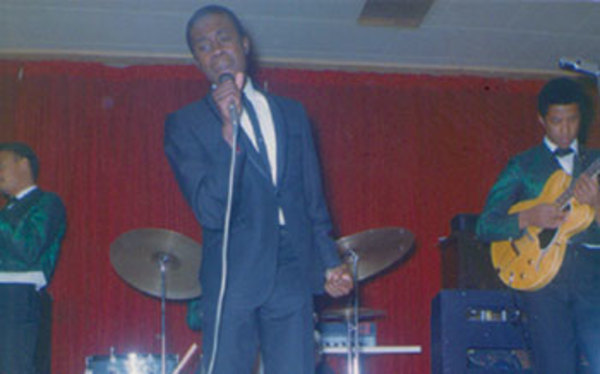Jamaica To Toronto: Studio One
The history of Studio One and every Kingston recording hut and soundsystem of the ’60s […]
Jamaica To Toronto: Studio One
The history of Studio One and every Kingston recording hut and soundsystem of the ’60s […]

The history of Studio One and every Kingston recording hut and soundsystem of the ’60s has been told many times through Soul Jazz and Trojan Records compilations. But while their liner-note scribes venture into every nook and cranny of the music’s fascinating history, their stories all seem to end in Jamaica. Enter Light In the Attic‘s Jamaica to Toronto, a series of discs that charts the reggae kings’ often-unknown post-Kingston history, when many musicians moved north to Toronto to reunite with their work-seeking families and start new lives. Following the brilliant Wayne McGhie & The Sounds of Joy, reissued 34 years after its original release on Canadian label Birchmount, Seattle’s LITA is now set to release Jamaica to Toronto: Funk Soul & Reggae 1967-1974, a compilation that tells a different story–one in which the reggae pioneers adapt to playing funk for a Canadian, R&B-loving public and Jackie Mittoo opens up a record store in Toronto’s Hillcrest neighborhood. Vancouver-based historian and researcher Kevin Howes (a.k.a. DJ Sipreano) further explains the journey north and how Jamaica to Toronto came to be.
XLR8R: How did you find out about this untapped well of vintage music?
Kevin Howes: Back in the mid-’90s, I dated a girl whose father owned a Jamaican record store and label in Toronto in the ’70s. Listening to records she’d inherited from her pops and getting turned onto albums like Wayne McGhie & The Sounds Of Joy by my homies Sureshot and Mr. Supreme (a.k.a. The Sharpshooters) set it off, but my own interest in Canadian sound heritage got me wanting to go even deeper.
Why was Toronto the destination for so many of these musicians? Why not New York or some other place?
By the ’60s, there was really large West Indian population in Toronto. Many had come to Canada as domestic and train workers. Once they received landed-immigrant status they were able to call for their families to join them. I think Vietnam and the possibility of being drafted was a big deterrent from settling in the States. Actually, there were a lot of American musicians who came north for the same reason.
What was the most surprising bit of information you uncovered?
That nobody had really taken the time to document what was going on. Growing up close to Toronto, you can’t help but notice the large West Indian population. As soon as I found my first [copy of] Wishbone [Jackie Mittoo’s first Canadian reggae LP from 1971] and read the liner notes, it wasn’t too hard figure that something magical was happening there. When Pablo (Cougars/Sounds Of Joy drummer Everton Paul) played me his unreleased white label copy of The Cougars’ “I Wish It Would Rain,” he had to pick me up off the ground.
Tell me about the studios and labels in Toronto at that time.
These musicians were pioneers. They built everything from the ground up. In the ’60s, they had to use the commercial recording studios of the day; places like Sound Canada, Thunder Sound, Eastern Sound, and Arc. Most of the time they had to pay for their own sessions too, but in 1974 the fist two black-owned studios opened, Oswald Creary’s Half Moon and Jerry Brown’s Summer Records.
How did the funk style come into play, considering these guys were generally known as reggae players?
Ever heard of “Funky Kingston?” I’ve always found it interesting that Jamaican musicians can emulate the American R&B sound as good [as], if not better than, many US players. These folks are extremely versatile, understand the dynamics, and really love what they’re doing. In the ’60s, Toronto was an R&B town. If you wanted to pay the bills, you adapted or didn’t eat.

